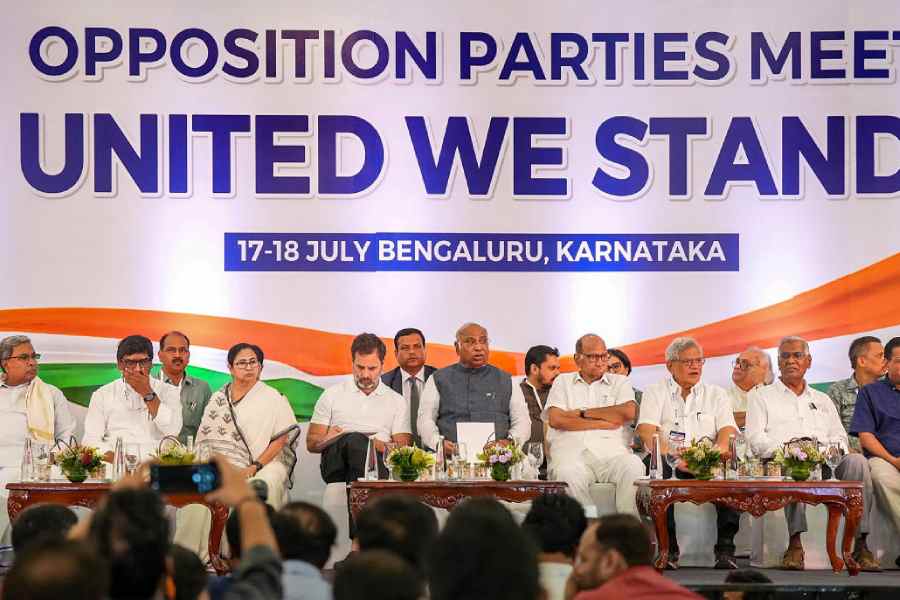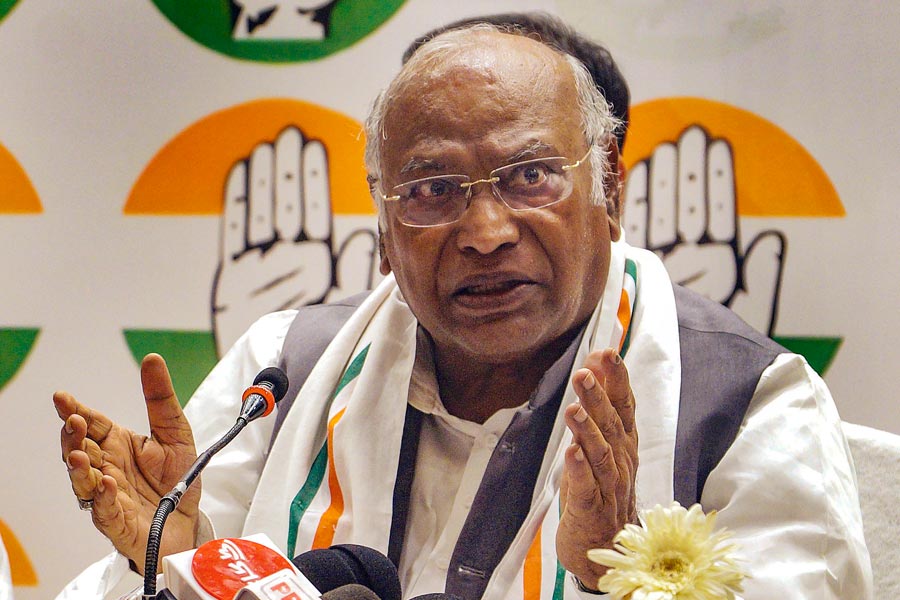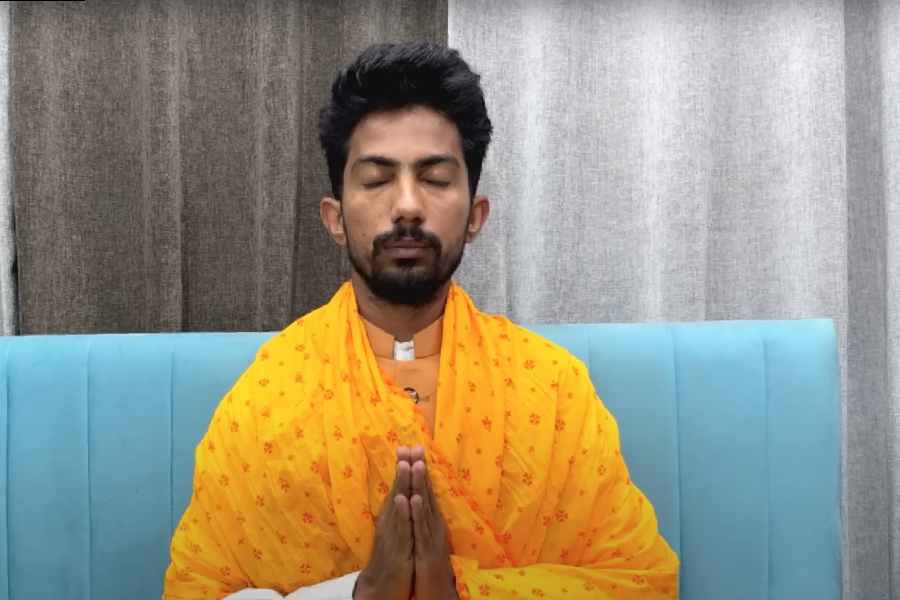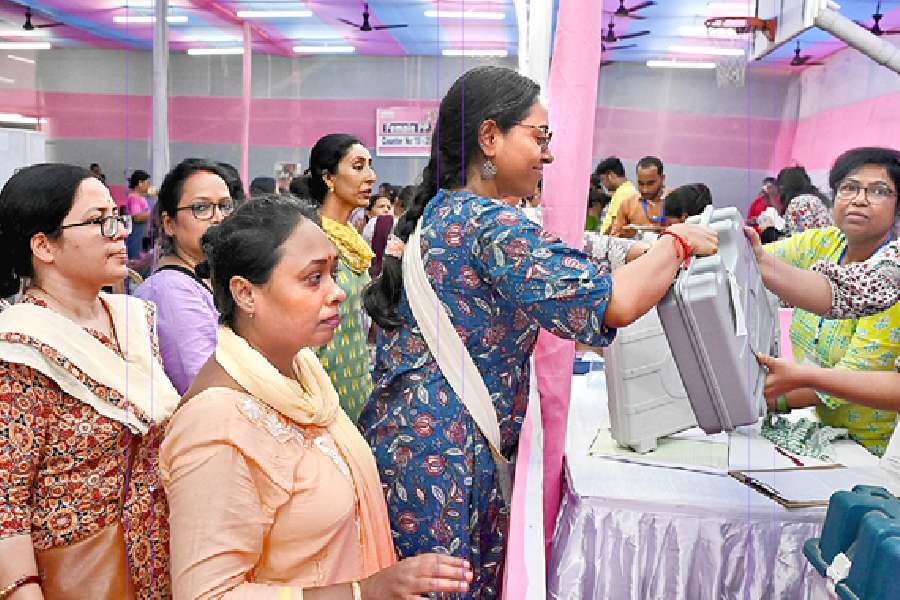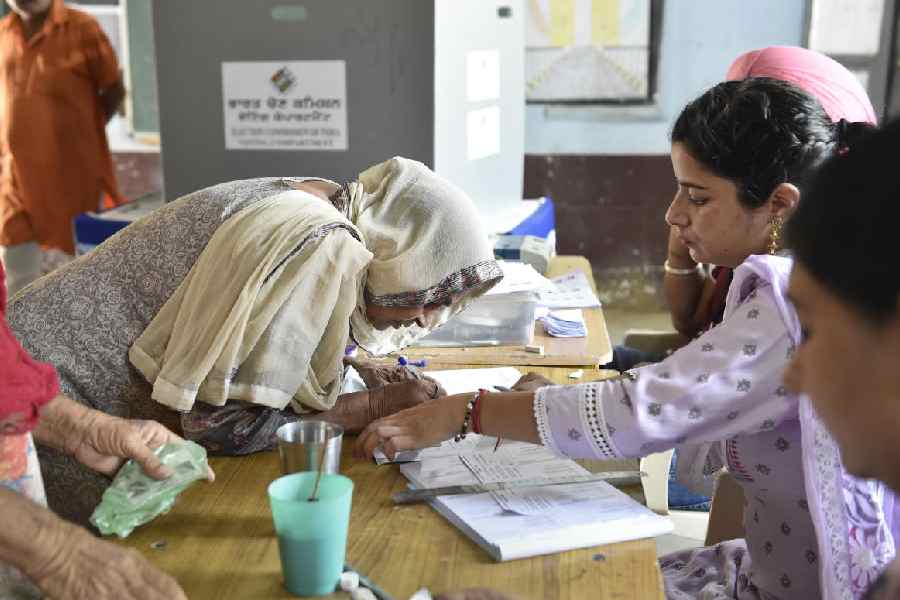The consecration ceremony of the Ram temple in Ayodhya provided a valuable snapshot of the Hindu nationalist imagination of State and society. The eminent guests collectively represented an idealised civil society in miniature. Besides the top leadership of the BJP-RSS parivar, the opportunity to partake in the ‘historical moment’ was reserved for a carefully assembled potpourri of social and economic elites: religious seers, captains of industry, media bosses, filmstars and other assorted celebrities.
The assembled civil society elites legitimated the imagery of the State as embodying a particular mode of sovereignty deriving from a Hindu majoritarian order. In turn, the State legitimated their leadership in the socio-economic order; in other words, this was a mutual exchange of ritualised legitimacy between an authoritarian political system and a hierarchical, elite-oriented structure of society.
The preceding description of the Hindutva political order might be a useful starting point to chart out possible strategies for resisting and overturning Hindutva hegemony.
Let us take the case of the whittled down INDIA coalition. The complications attending seat-sharing arrangements are somewhat understandable. Less excusable is the coalition’s inability to articulate any shared political programme or a clear governance agenda even as we approach the precipice of the election.
The recent bi-annual India Today-CVoter poll captured the alliance’s loss of momentum. In August 2023, the vote-share gap between the NDA and the INDIA coalition had narrowed down to 2%. Since the NDA’s vote share is more geographically concentrated than the INDIA alliance, the former might have scraped past the majority mark even with a thin lead in vote share. Yet, the contest still remained competitive. In the latest survey of February 2024, the lead has increased to 6%, and the NDA seems headed for a clear majority. Why has the INDIA coalition struggled to build any momentum over the last year after its much-heralded launch in Patna last year?
The Italian political philosopher, Antonio Gramsci, had argued that the classical Machiavellian hegemony between the “prince” (popular sovereign) and the “populo” (masses) cannot be contested through old-school political rhetoric or conventional methods. Since hegemony is built on the coming together of a synergistic historical bloc, the Opposition bloc must also embody a unified force. In Gramsci’s phraseology, the “orchestra” of political forces should “come to life as a single instrument” — the Opposition must appear to represent a coherent, counter-political vision.
To ground this theoretical discussion, let us consider some concrete factual points.
A 2019 CSDS survey of popular attitudes found that political parties were the least trusted institution in the country. The highest proportion of effective trust (or net trust) was reserved for “independent institutions”, such as the army (86%) and the Supreme Court (69%). The institutions of prime minister, chief minister, and other functionaries of the government carried moderate levels of trust (between 40% to 60%). Political parties were the only institution that were more distrusted than trusted (negative effective trust of 9%). These figures reflected a cratering of public trust across states compared to a similar CSDS survey of 1996 in which the majority of respondents (61%) had exuded trust in political parties as important institutions in the working of democracy. Alongside, a clear plurality (43%) felt that political parties made a substantive difference by forcing a government to listen to the people.
The legitimacy of political parties has been fundamentally undermined by their gradual removal from the social sphere. Parties born out of social movements or particular struggles have matured into narrow electoral outfits basing their political mobilisation on money power and capacity for violence. Nearly all of them have acquiesced to the neoliberal economic order hitched to the State-corporate partnership for development.
Post-1990s, these political transformations have become the norm, from the CPI(M) “pulling back” from its image of a “social movement party” (Patrick Heller) to the Samajwadi Party turning “conservative in practice” (Gilles Verniers). However, the communist regime’s partnership with corporates post the new industrial policy of 1994 in West Bengal and the SP’s striking pro-corporate tilt in Mulayam Singh Yadav’s third term (2003-2007) eroded their legitimacy in an indirect manner. It was not as if their constituents were reflexively opposed to the neoliberal paradigm. In the survey data for the NES 2014, 81% of the Bengali electorate agreed that the loss of the Tata Nano project from Singur is “bad news” for the state’s “economic development”. Yet, in aligning the might of State power with big corporates against protesting farmers, the communists not only wrecked their core political appeal of championing the ordinary peasants but also lost the popular legitimacy undergirding their coercive control of the countryside. In the popular idiom, corruption in the political economy becomes intolerable precisely when routine financial misappropriation and political violence become divorced from higher ends of public good or social justice.
The deepening of democracy has made local institutions (panchayats and municipal councils) the primary interface for everyday issues of governance. Similarly, the universalisation and digitalisation of welfare delivery services have increasingly made these the preserve of a Centrally-directed bureaucratic structure. Between these two ends, the political party finds itself gasping for legitimacy.
The prevalent cynicism attached to the role of political parties is a major challenge to substantive democratic functioning. The challenge becomes more acute in a dominant party system where the ruling party expends systematic effort at ‘delegitimising’ its political opponents. The obvious recourse available to the Opposition parties — banding together to confront the ruling party — can be particularly ineffective in this situation. To a cynical populace, a disparate coalition of political parties, far from transcending into a plane of higher accumulated trust, might well lead to its further erosion.
It is not surprising that INDIA’s counter-narrative to the NDA has thus far failed to capture the popular imagination. The perils of a top-down model of coalitional politics had also been apparent in the last election. Take the case of Karnataka. The combined vote share of the Congress-JDS alliance declined by 11% compared to the total of their individual vote shares from the previous election. The CSDS-Lokniti post-poll survey revealed the incompatibility underlying support bases: only a minority of the voter base of either party claimed to ‘like’ the other alliance partner.
INDIA does not appear to pass the smell test of a coherent historical bloc because it emits a plethora of discordant noises, not the singular melody of a well-tuned orchestra. There are no shared friend-enemy distinctions providing a convergent axis of popular mobilisation, or a coherent political project based on an underlying conceptual unity built on evolving socio-economic dynamics.
To chart the contours of an effective politics of resistance to Hindu nationalist hegemony, let’s overview some survey data and concrete examples from certain states. In the latest India Today Mood of the Nation survey, 52% of the respondents say big business has benefited most from the Narendra Modi government’s policies. Similarly, a plurality believes that the Centre’s economic policies have “widen[ed] [the] divide between... rich and poor...” In the southern states, both the Congress (Telangana, Karnataka) and regional parties (DMK) have effectively restricted or reversed the Hindu nationalist hold through deeper engagement with the counter-sphere of ‘organisations and movements’, such as NGOs, labour unions, social movements, and subaltern caste blocks. In Telangana, the Congress rose on the back of what Jürgen Habermas called “new social movements” — movements emerging organically from wider society (among Dalits and tribals, landless peasants and marginalised farmers) opposing large-scale appropriations of the State-corporate nexus. The latent social base on which the Congress rose had emerged during the Telangana movement: yet it only became a salient driver of Opposition politics once the local Congress had adapted itself into becoming its primary vehicle. It was also on the back of these new social movements that the Trinamul Congress broke the back of the Left hegemony in Bengal. The state required a renewed Opposition force because the parent Congress had devolved into an inert, conciliatory formation whose own legitimacy had little grounding beyond the old paradigm of patronage-based power politics.
Oppositional politics in the Hindi belt, that of the Congress and its Mandal counterparts, however, remains glued to the 1990s model of top-down electoral coalitions. This is a willful negation of the demands of popular politics in the era of televised mass culture and bipolar polities. The historical moment clearly demands a programmatic politics rooted to a transcendental idea of justice forged in the creative interactions between politics and civil society.
Asim Ali is a political researcher and columnist

